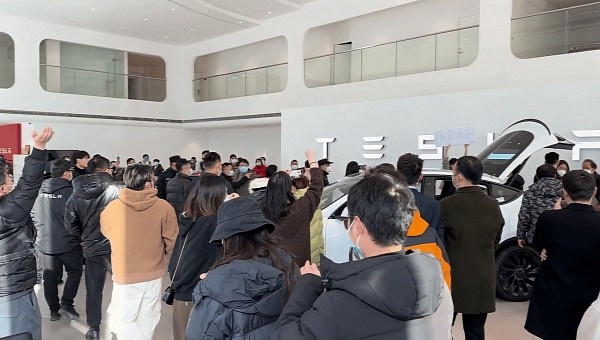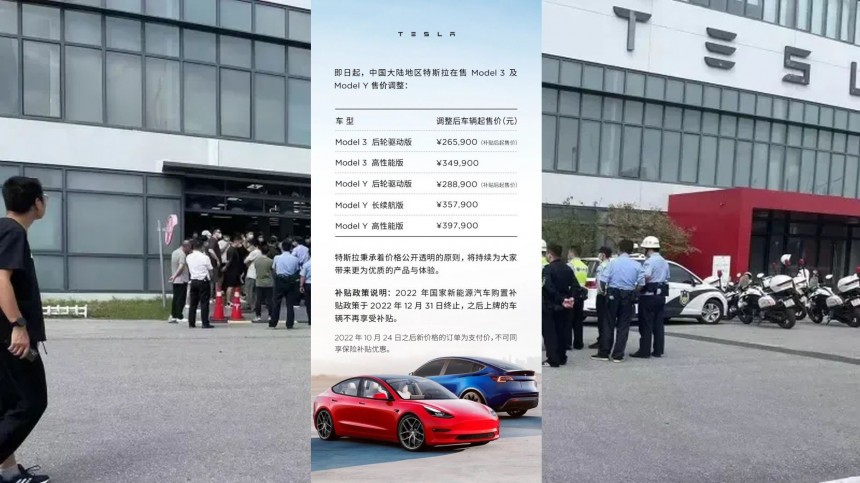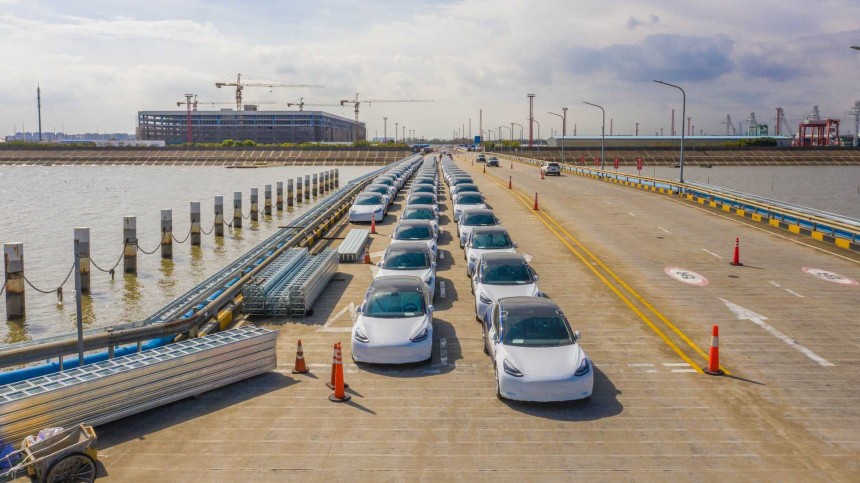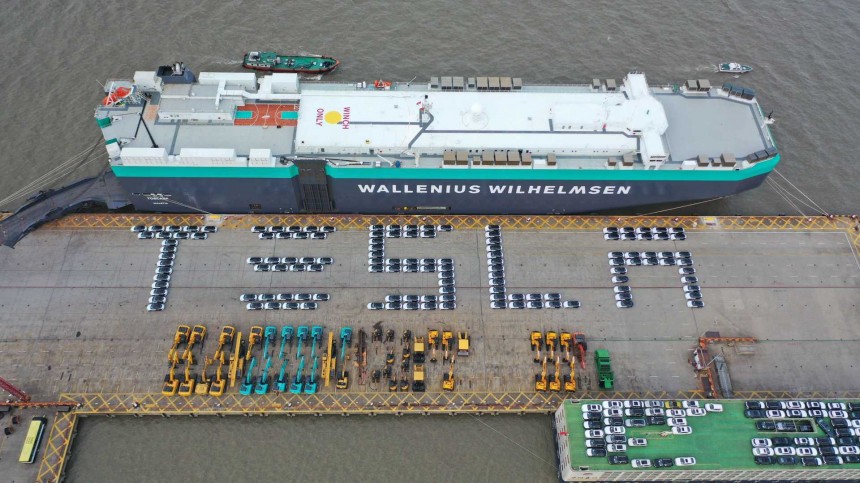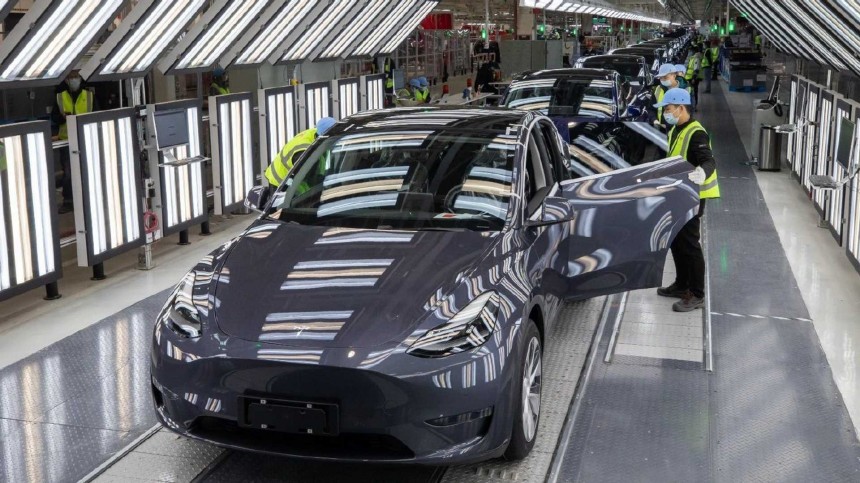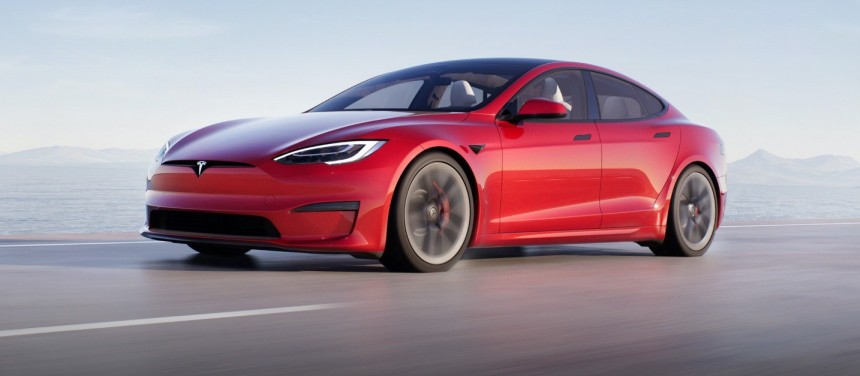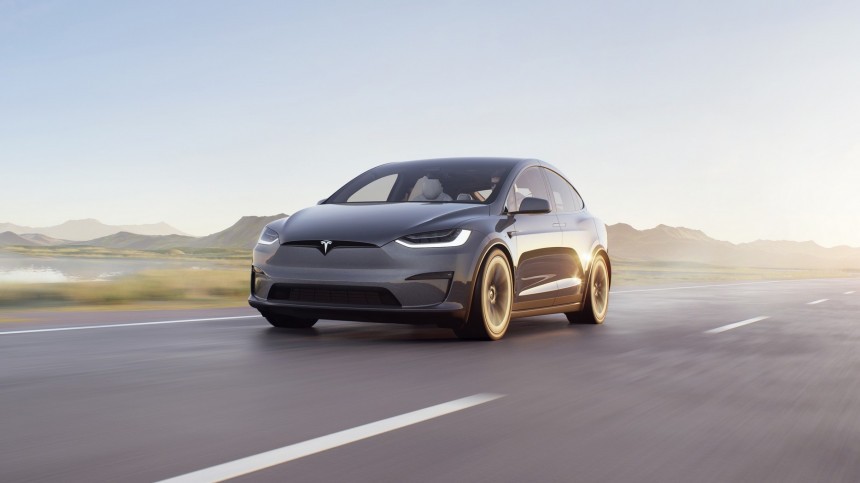Tesla has never sold so many cars in a single quarter as in Q1 2023: 422,875 units. Its fans celebrated it because market analysts believed the company would deliver 421,500 vehicles. That said, the EV maker theoretically beat the expectations. It left them scratching their heads when share prices dropped around 7% on April 3, the first working day after the results were released. The explanation is far less complicated than these guys may think.
Great sales results are only relevant if they come naturally – as the result of a sustainable strategy. Just check BYD: it sold 552,076 vehicles in Q1 2023. That’s a 90% increase compared to Q1 2022, sustained by new products and an aggressive international expansion plan. Tesla’s new sales record was a 26.68% increase compared to Q1 2022 deliveries.
When such growth is artificially provoked, it fails to impress. In fact, it may suggest something is not going according to the plan. In Tesla’s case, these better sales numbers were achieved due to a massive discount on all its vehicles. While they pleased thousands of new customers, it may have made thousands more furious, especially those who had purchased an EV from the brand shortly before the rebate. Chinese customers protested and even vandalized Tesla Service Centers. Used EV prices dropped due to the move, so old owners are also among those who may have gone mad with Tesla’s strategy.
The EV maker justified the reduced prices with “a partial normalization of cost inflation.” Whatever that is supposed to mean, it does not work that way. If your production costs drop, but you still have enough demand for your goods, you do not lower your prices. Not necessarily because you are greedy, but for strategic reasons.
First, you do not need to warn your competition that you have found ways to make your vehicle less expensive to manufacture. When you do that, you get other carmakers immediately trying to figure out how you did that. It is better to be discrete and to let them discover that on their own, months or years later. Secondly, most companies know the prices of new cars dictate the depreciation rates of used vehicles. Reducing them will harm other customers, especially the most loyal ones.
The only rational explanation for discounts is to get rid of your inventory. It is expensive to keep vehicles parked somewhere waiting for a buyer, especially when you do not have dealers to share that expense with you. In Tesla’s case, it should not even be possible. After all, the company claims to produce only BEVs that someone has already ordered. The explanation is that people may give up buying the cars, either due to financial difficulties or because the vehicles were not delivered as they should have. There are several such cases involving Tesla products due to manufacturing flaws.
Let’s suppose dropping prices helps Tesla keep its factories running, but why would it do that if it cannot sell at the same speed as it makes its BEVs? To make matters worse, the automaker allegedly pushed to increase production at Giga Grünheide and announced a new factory in Mexico. None of that makes any sense without new products or new markets.
According to Dan Levy, Tesla has made around 75,000 more vehicles than it has managed to sell in the last nine months. What the Barclay's analyst said led me to check the data. After all, whenever the EV maker presents larger production numbers than deliveries, it comes with the excuse that the extra units were not handed to clients because they were still in transit. That’s not what its own numbers reveal.
Tesla’s Q4 2022 brought production and delivery figures from 2018 until 2022. If you add all of them until Q1 2023, you get an even more considerable difference than that Levy shared: 84,583. If that does not seem like much, it is almost as many BEVs as Tesla sold in China in March (88,869). The Barclay’s analyst was talking about the production and delivery differences from Q3 2022 until Q1 2023. To be more precise than Levy, Tesla has 74,449 EVs it did not deliver in these quarters. We can even see how the demand problem got worse.
In Q3 2022, Tesla made 22,093 more EVs than it managed to sell. If the problem were that these cars were still in transit, Q4 2022 would have fixed it. Yet, the difference between production and deliveries increased to 34,423. At that pace, we would probably have seen a number close to 50,000 EVs waiting to be delivered if Tesla did not reduce prices. With the discount, the EV maker made that number drop to 17,933 units.
The bad news for Tesla is that this is not sustainable. Market analysts suspect the company will have to drop prices for the Model S and Model X even more than it already has. Giving them a steering yoke and more performance was not enough to revert the sales decrease they have been experiencing since 2019 – when production numbers dropped 38.03%. In 2018, it made 101,553 EVs. A year later, 62,931. In 2020, the year-over-year drop was 12.91%, to 54,805 units, but it reached critical levels in 2021: 55.05%, with only 24,390 Model S and Model X units manufactured.
Things improved in 2022 for Tesla’s old-timers: production increased by 191.83%. However, it seems that trend shift will not last. In Q1 2023, Tesla manufactured 8,742 more Model S and X units than it delivered. When I summed up the differences from 2018 until the last quarter report, the number was 8,606. In other words, most of the exceeding EVs were produced recently.
This example shows how Tesla behaved differently when its flagships were not selling that well. The story changed when the Model 3 and the Model Y started being affected. That teaches that products have to be attractive for reasons other than price. In an era of planned obsolescence, when anything gets too old, the only way to fix that is to refresh or replace it. Tesla seems to have trusted it would never need to do either.
When demand falls and an automaker has a large inventory, it usually just uses a furlough or collective leaves. Paying workers or not, car companies manage to halt production until it is necessary to get back to it. With its “partial normalization of cost inflation” excuse, Tesla refused to recognize it has the demand problem its own number so clearly demonstrates.
That led analysts to share they fear more price reductions will follow. It is the only outcome possible, with 84,583 EVs yet to sell. Tesla pushing the production accelerator pedal even harder only makes that worse. 2023 promises to be a bumpy road for Tesla investors, especially those that fool themselves with sales records the EV maker paid to achieve. Tesla could have easily avoided that by investing more in quality control and product development.
When such growth is artificially provoked, it fails to impress. In fact, it may suggest something is not going according to the plan. In Tesla’s case, these better sales numbers were achieved due to a massive discount on all its vehicles. While they pleased thousands of new customers, it may have made thousands more furious, especially those who had purchased an EV from the brand shortly before the rebate. Chinese customers protested and even vandalized Tesla Service Centers. Used EV prices dropped due to the move, so old owners are also among those who may have gone mad with Tesla’s strategy.
First, you do not need to warn your competition that you have found ways to make your vehicle less expensive to manufacture. When you do that, you get other carmakers immediately trying to figure out how you did that. It is better to be discrete and to let them discover that on their own, months or years later. Secondly, most companies know the prices of new cars dictate the depreciation rates of used vehicles. Reducing them will harm other customers, especially the most loyal ones.
Let’s suppose dropping prices helps Tesla keep its factories running, but why would it do that if it cannot sell at the same speed as it makes its BEVs? To make matters worse, the automaker allegedly pushed to increase production at Giga Grünheide and announced a new factory in Mexico. None of that makes any sense without new products or new markets.
Tesla’s Q4 2022 brought production and delivery figures from 2018 until 2022. If you add all of them until Q1 2023, you get an even more considerable difference than that Levy shared: 84,583. If that does not seem like much, it is almost as many BEVs as Tesla sold in China in March (88,869). The Barclay’s analyst was talking about the production and delivery differences from Q3 2022 until Q1 2023. To be more precise than Levy, Tesla has 74,449 EVs it did not deliver in these quarters. We can even see how the demand problem got worse.
The bad news for Tesla is that this is not sustainable. Market analysts suspect the company will have to drop prices for the Model S and Model X even more than it already has. Giving them a steering yoke and more performance was not enough to revert the sales decrease they have been experiencing since 2019 – when production numbers dropped 38.03%. In 2018, it made 101,553 EVs. A year later, 62,931. In 2020, the year-over-year drop was 12.91%, to 54,805 units, but it reached critical levels in 2021: 55.05%, with only 24,390 Model S and Model X units manufactured.
This example shows how Tesla behaved differently when its flagships were not selling that well. The story changed when the Model 3 and the Model Y started being affected. That teaches that products have to be attractive for reasons other than price. In an era of planned obsolescence, when anything gets too old, the only way to fix that is to refresh or replace it. Tesla seems to have trusted it would never need to do either.
That led analysts to share they fear more price reductions will follow. It is the only outcome possible, with 84,583 EVs yet to sell. Tesla pushing the production accelerator pedal even harder only makes that worse. 2023 promises to be a bumpy road for Tesla investors, especially those that fool themselves with sales records the EV maker paid to achieve. Tesla could have easily avoided that by investing more in quality control and product development.
Tesla wholesale
— Moneyball (@MoneybaII_R) April 4, 2023
??Mar: 88,869
(CPCA) https://t.co/I7smvwC6sg
